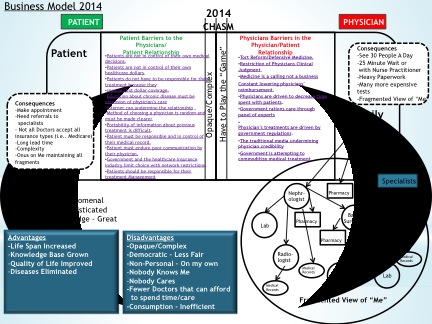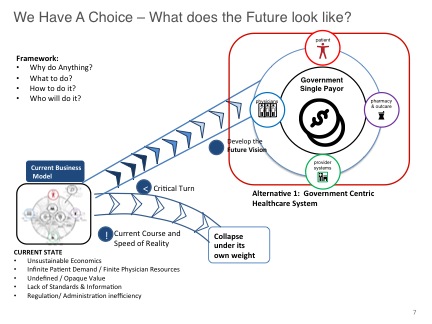Obamacare Post Mid-Term Elections
Stanley Feld M.D.,FACP,MACE
The mid-term elections are over. The Republicans captured majorities in the House and Senate. The election was a clear repudiation by the people of President Obama’s policies.
President Obama has denied this reality. He has pledged to pursue his ideological goals that have hobbled the people and the country so badly.
The polls have indicated that the public is opposed to Obamacare and all of its unintended consequences.
We ain’t seen nothin yet. The unintended consequences are going to escalate starting with the delayed open enrollment season on November 15 2014. This opened enrollment was unnoticed, so Democrats did not suffer any blowback from Obamacare during the mid-term elections.
Larger categories of people and businesses will be affected by Obamacare’s rules and regulations on January 1,2015. Last year only people in the individual healthcare insurance market were affected.
President Obama continues to mock Republicans by telling them he will be happy to listen to them to see if they have a better idea than Obamacare.
Everyone knows he has no interest in changing or repealing his legacy healthcare law.
The majority of people are dissatisfied with Obamacare. All the Republicans have to do is come up with an idea that is compelling to all of the public. The power of public opinion can demand that Obamacare must change.
It has to be a simple idea. It has to teach consumers how to be responsible for their health and their own healthcare dollars. It has to educate consumers on how to drive the healthcare system and remove government from controlling their healthcare choices.
The basic problem with our present healthcare system is medical care is fragmented. In addition, all the stakeholders’ vested interests are misaligned.
President Obama, with his forced passage of Obamacare, has added to the dysfunction of the healthcare system. .
Obamacare is meant to be a step toward a single party system.
The government cannot afford, and the nation will not accept, a government controlled single party payer system.
Obamacare does not do anything to repair the distortions of to the system that have led to the dysfunction of the healthcare system pre Obamacare.
The most important stakeholder in the healthcare system is the consumer. Obamacare has marginalized consumers/patients even further.
It was hard for consumers to have notice the dysfunction in the healthcare system because only 20% of consumers use the healthcare system at one time. The remaining 80% thought their healthcare insurance was fine.
Since Obamacare was passed into law it is affecting everyone directly and they are starting to complain.
The current state problem are shown in the figure below.
A dizzying array of stakeholders is all fighting for a competitive advantage, or at the very least survival, in the dysfunctional current state.
Obamacare’s rules and regulations have made the current state more difficult for everyone. This is leading to the impending collapse of the healthcare system.
Republican Party should not tinker with legislation to try to fix Obamacare.
It should step in right now and educate the consumers about their consumer power. Republicans need to present a market driven solution that is easy to understand.
Once the public understands what they can do, it will change its attitude from the helplessness and hopelessness to an empowered reaction to do something to change the system.
There are many other things that need to be demanded by the public. I believe empowering the public to demand a market driven system is crucial to a viable and affordable healthcare system.
Almost all the stakeholders believe something must change. The centrally controlled healthcare system’s business model will not work or be sustainable. All one has to do it look at the VA Health System.
Consumers and businesses are becoming frightened and beg the government for help. The government will institute a single party payer system.
The result is that consumers will not be able or willing to tolerate a centrally controlled healthcare system.
As I see it, the nation has two choices: Alternative 1 and Alternative 2.
Alternative 1:
If we extend the course of our present healthcare system to a single party payer system (Alternative 1) the costs will escalate, and access to care will decrease. It is inevitable the rationing of care will occur.
Alternative 2

Alternative 2 would be a market-based system that would put the consumer in the center of the healthcare system.
Provider systems and administrative systems would have incentive to make its products attractive to consumers at the lowest price possible with the highest quality of care.
Consumers, by owning their healthcare dollars, would have the freedom and resources to choose. Government and its bloated and inefficient bureaucracies should not be making medical care choices for consumers.
Two things must happen. Republicans must teach consumers the advantages of a market based business model.
The Republican congressional majority must start teaching all the other stakeholders (physicians, hospital systems, the government, the healthcare insurance industry and Big Pharma) the advantages of this market-based system to their vested interest.
The alignment of vested interests must start right now and not down the line.
The Obama administration will dismiss the possibility of a successful market based system. Republicans must not be intimidated. Didn’t they win the election this time?
The Obama administration’s conclusions are based on ideology not past history, logic, fact or evidence.
The Obama administration and its followers will reject the possibility of success for an incentive driven system instead of a government controlled system.
A market-based system can be presented in a way where all the stakeholders can buy into a successful consumer driven future state.
The opinions expressed in the blog “Repairing The Healthcare System” are, mine and mine alone
Please have a friend subscribe

